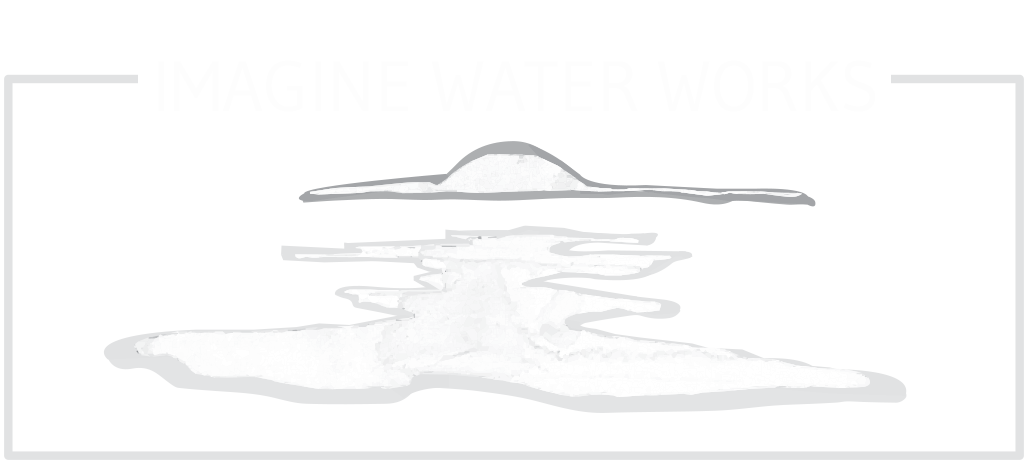Welcome to WaterMark, your monthly briefing on water programs and policies in Louisiana. Between hurricane season, street flooding, boil water advisories, and continued outreach for our neighbors in Houston + Florida, it has definitely been an eventful month. If you were impacted by the most recent street flooding, we hope that these resources will help protect your home, your neighborhood, and your business. We’re thankful that the worst of Hurricane Nate’s impact missed us after such a busy summer.
Best Wishes,
Propeller + Water Works
Additional Resiliency Resources
- CPRA’s Flood Risk + Resilience Resources
- Joy of Water: A Homeowner’s Guide to Becoming Water Wise
- Business Survival Handbook: Survival After a Disaster
- New Orleans Building Hardening Guide
- New Orleans Business Continuity Guide
- Flooding Fact Sheets for 2017 Elections
In The News
Community Flood Tracking with iSeeChange
WaterMark
The iSeeChange mobile app allows residents to track street flooding! As we’ve noticed in recent months floods are on the rise, and now residents are encouraged to help track reports of flooding. The information is used to determine “where to monitor and target flood fixes so we can be more resilient.” View examples of community submissions or download the iSeeChange Tracker App. And read more about their current neighborhood pilot project in the Gentilly Resilience District, here.
BGR Hosts Briefing to Discuss the 2017 Coastal Master Plan
BGR News
The Bureau for Governmental Research (BGR) hosted its Coastal Master Plan in the Greater New Orleans Region Breakfast Briefing on September 19th in Covington. Johnny Bradberry form CPRA and Mark Davis from the Institute on Water Resources Law and Policy & Tulane’s ByWater Institute discussed the 2017 Coastal Master Plan with highlights including the importance of citizen-led efforts to save the coast, limitations of local governments’ abilities to fund and manage subsidence, the need to consider the effects of sea level rise and saltwater intrusion on potable water, and the importance of financing coastal restoration. The full report, including videos from the briefing, can be found here.
Diverting Water from the MS to Restore the Dying Maurepas Swamp
The Lens
CPRA has received “about $14 million to engineer a system to reconnect the Mississippi River to the Maurepas Swamp, which has been cut off from its rejuvenating floodwaters for about 80 years. The money comes from the Restore Council, established by Congress to allocate fines from the BP oil spill. The swamp, which is mostly forested wetlands, has been dying for decades due to logging and the levees built along the river to prevent flooding. Canals dug to remove cypress trees have allowed saltwater to penetrate into the swamp, killing trees.” More information here.
LSU’s Water Campus Constructs 10,000 sq ft model of the Mississippi River
The Advocate
Scientists and engineers at the Campus have built a gigantic model of southeast Louisiana, including the Mississippi River Delta. “Technicians were still calibrating water flow rates and wiring projectors in anticipation of opening the Center for River Studies at The Water Campus to the public by the end of the year. When it’s complete, LSU scientists will be able to run water and silt-like substances down the model, which starts at Donaldsonville in Ascension Parish. Then, by adjusting the flow and opening various diversion canals and floodgates, they can see where and how the sediment is deposited under various conditions….” Full article here.
Water Equity Clearinghouse Database Provides Resources on Equitable Water Management
US Water Alliance
The Water Equity Clearinghouse is an online database to showcase promising practices that are being developed around the country to make our water systems more equitable and inclusive. It is a companion piece to the US Water Alliance’s national briefing paper An Equitable Water Future, highlighting the work of utilities, community-based organizations, government agencies, philanthropic organizations, researchers, and more. The clearinghouse allows users to search for promising organizations by focus area, strategies, populations served, location, and more.
More information on the clearinghouse here.
Changes to the NFIP are Anticipated
The Washington Post, WWNO
The White House recently sent a $30 billion disaster relief funding proposal to Congress. The National Flood Insurance Program (NFIP), which was recently re-authorized on a short-term basis until December 8th, is expected to be targeted in the bill. Several congressmen are calling for changes, including opening up flood policies to private insurers and phasing out NFIP policies on new residential construction. A separate piece from WWNO pointed out the problem of severe repetitive loss properties in Louisiana. These properties are mostly single family homes worth less than $250,000. Full articles from The Washington Post and WWNO.
To prevent disaster, rethink development
US News and World Report
Vulnerability of current infrastructure to hurricanes may be lessened with the development of better building practices. Three ways to reduce the risks of future developments from hurricanes like Harvey, Irma, and Maria include avoiding construction in flood danger zones, raising standards and houses, and taking additional cautions before rebuilding. Full article here.
Upcoming Events & Opportunities
- Proposals for NORA due October 27 at 4pm; NORA released RFP for Community Adaptation Program (CAP) on Sept. 22nd, seeking teams to provide professional design, construction, and education services for residential stormwater management interventions. For more information on the RFP, see here.
- Annual LA Smart Growth Summit November 7-8 @ downtown Baton Rouge; The Center for Planning Excellence (CPEX) is hosting its annual Smart Growth Summit. The agenda, speakers, and other details can be found here.
- CPRA Board Meeting October 18 at 9:30am; The Coastal Protection Restoration Authority (CPRA) will hold their board meeting at the Belle Chase Auditorium, 8398 Highway 23, Belle Chasse, LA
WaterMark is a monthly briefing on water programs and policies in Louisiana, brought to you by Propeller and Water Works.




